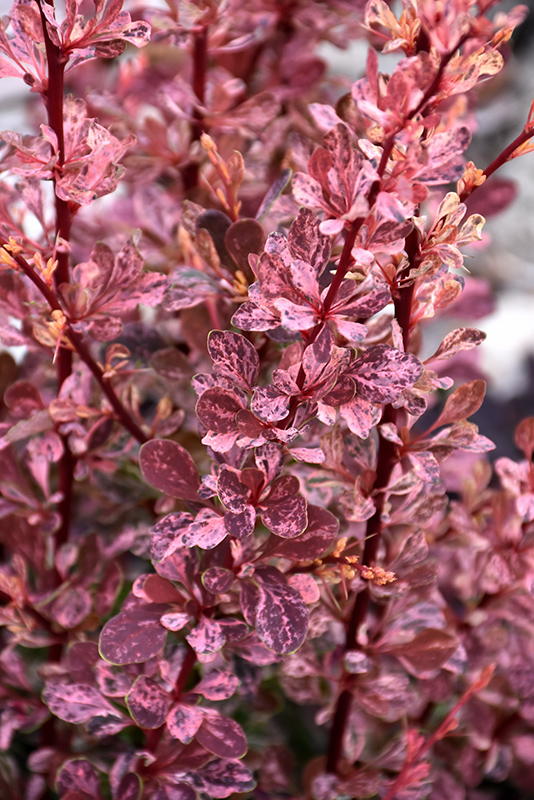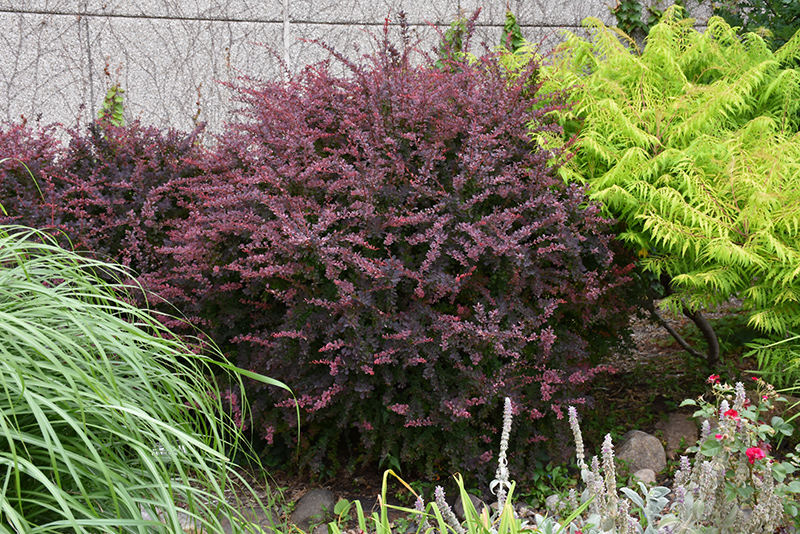Rose Glow Japanese Barberry
Berberis thunbergii 'Rose Glow'
Height: 5 feet
Spread: 6 feet
Sunlight:
![]()
![]()
Hardiness Zone: 3
Description:
A spectacular selection with pink and purple variegated foliage, definitely a knockout for color contrast in the landscape; makes a great accent, solitary or impenetrable hedge; very popular and worthy of its renown
Ornamental Features
Rose Glow Japanese Barberry is primarily grown for its highly ornamental fruit. The fruits are showy scarlet drupes carried in abundance from early to late fall. It has attractive pink-variegated dark red foliage which emerges red in spring. The small oval leaves are highly ornamental and turn an outstanding burgundy in the fall. It features tiny clusters of yellow flowers hanging below the branches in mid spring.
Landscape Attributes
Rose Glow Japanese Barberry is a dense multi-stemmed deciduous shrub with a more or less rounded form. Its relatively fine texture sets it apart from other landscape plants with less refined foliage.
This shrub will require occasional maintenance and upkeep, and can be pruned at anytime. It is a good choice for attracting birds and bees to your yard, but is not particularly attractive to deer who tend to leave it alone in favor of tastier treats. Gardeners should be aware of the following characteristic(s) that may warrant special consideration;
- Spiny
Rose Glow Japanese Barberry is recommended for the following landscape applications;
- Mass Planting
- Hedges/Screening
- General Garden Use
Planting & Growing
Rose Glow Japanese Barberry will grow to be about 5 feet tall at maturity, with a spread of 6 feet. It tends to fill out right to the ground and therefore doesn't necessarily require facer plants in front, and is suitable for planting under power lines. It grows at a medium rate, and under ideal conditions can be expected to live for approximately 20 years.
This shrub does best in full sun to partial shade. It is very adaptable to both dry and moist growing conditions, but will not tolerate any standing water. It may require supplemental watering during periods of drought or extended heat. It is not particular as to soil type or pH, and is able to handle environmental salt. It is highly tolerant of urban pollution and will even thrive in inner city environments. Consider applying a thick mulch around the root zone in both summer and winter to conserve soil moisture and protect it in exposed locations or colder microclimates. This is a selected variety of a species not originally from North America.



